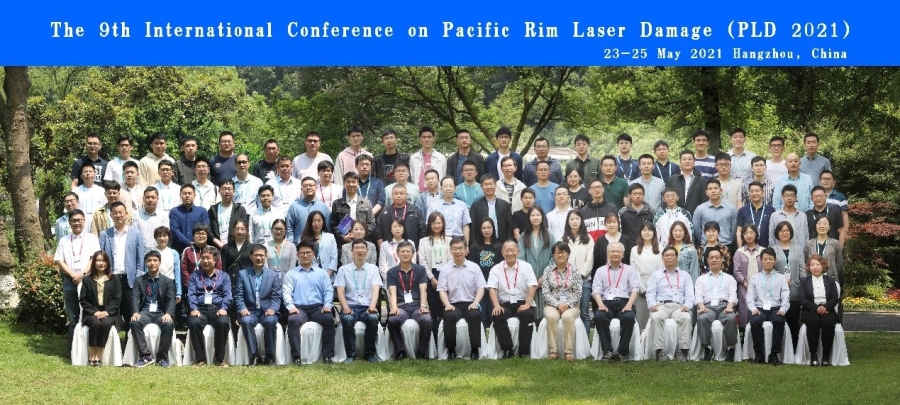From 23rd to 25th May 2021, the 9th International Conference on Pacific Rim Laser Damage (PLD 2021), co-hosted by Shanghai Institute of Optics and Fine Mechanics (SIOM), Chinese Academy of Sciences (CAS), and the International Society for Optical Engineering (SPIE), was successfully held in Hangzhou, Zhejiang Province.
PLD 2021 was co-chaired by Prof. Jianda Shao of SIOM, CAS, Prof. Takahisa Jitsuno of Osaka University, and Prof. Wolfgang Rudolph of the University of New Mexico. A total of 55 papers were received at this conference. They were contributed by over 140 scientists, engineers, and researchers from the United States, Germany, Italy, China, and other countries. Due to the COVID-19 pandemic, overseas experts participated online.
At the opening ceremony, Long Zhang, deputy director of SIOM, delivered an opening speech on behalf of the organizing committee, introducing the history of the international conference and the overall situation of this conference. Dongyao Wang, Deputy Director of the Bureau of International Cooperation of CAS, delivered a speech to congratulate the convening of this meeting and to wish the meeting a success. Subsequently, researcher Wanguo Zheng of Research Center of Laser Fusion, CAEP, Professor Vladimir Pervak of Ludwig Maximillians University, Chairman Zhouling Wu of ZC Optoelectronic Technologies Ltd., and Researcher Yuxin Leng (represented by Researcher Yi Xu) of SIOM made keynote talks at the conference. Afterwards 19 well-known experts gave invited reports on related topics. The conference focused on i) high power laser damage (UV through IR), ii) ultrafast through CW laser irradiation effects, iii) laser ablation and laser machining, iv) high laser damage resistant coatings, v) Defects, contamination, polishing, and surface damage, vi) Characterization techniques and measurement protocols, vii) Mechanisms, modeling, and simulations, viii) nonlinear laser crystals, ix) laser ceramics, and x) optical glasses and fibers. Scientists, engineers, and researchers at the meeting shared their latest research progress, enthusiastically discussed related topics. The venue is full of a strong academic atmosphere. Participants spoke highly of the organization of this conference and believed that this conference provided a good platform for academic exchanges for researchers around the Pacific Rim and even the world and also played a good role in the development of science and technology in this field.
In order for the participants to learn more about the Hangzhou Institute for Advanced Study ("Hangzhou Institute for Advanced Study"), University of Chinese Academy of Sciences (UCAS), and to enhance the reputation and international influence of the Hangzhou Institute for Advanced Study, the organizing committee organized a visit to the Hangzhou Institute for Advanced Study after the meeting. Hangzhou Institute for Advanced Study is a joint school run by the Hangzhou Government and the UCAS. It is a new type of institution integrating science, education, industry, and innovation. It is also a secondary college directly under the UCAS. The orientation of the college is a "high starting point, small but precise". The philosophy of Hangzhou Institute for Advanced Study has been highly praised by experts and scholars.
The successful holding of this conference provides domestic counterparts with a good opportunity to participate in international exchanges, as well as expands cooperation channels with well-known scientific research institutions at home and abroad, and further enhances China’s international influence in the field of Optical Materials for High Power Lasers. SIOM will further develop international exchanges and cooperation, making the PLD an important academic platform for laser damage and optical materials scientists around the Pacific Rim region to exchange new ideas, new methods, and new technologies, contributing to the development of our country’s high power laser technology and laser materials.



